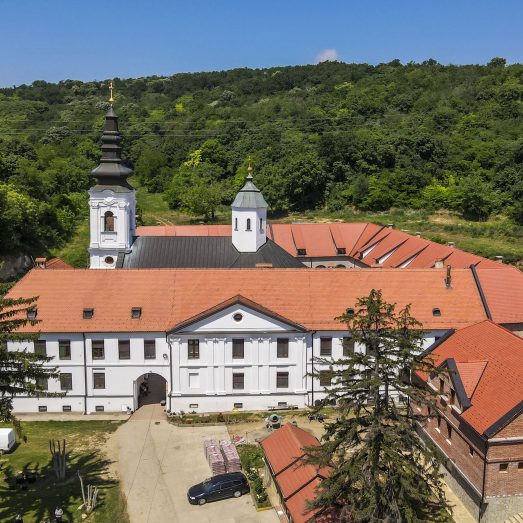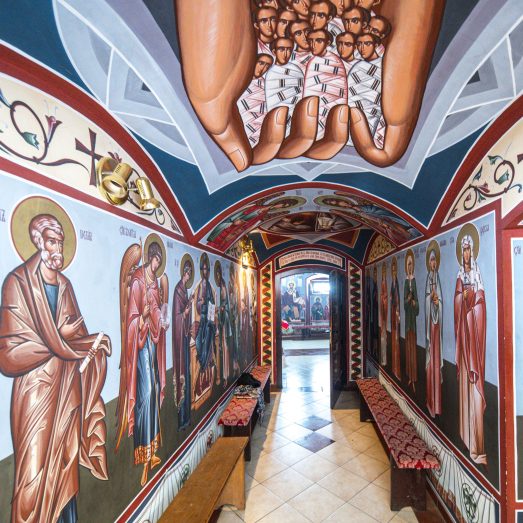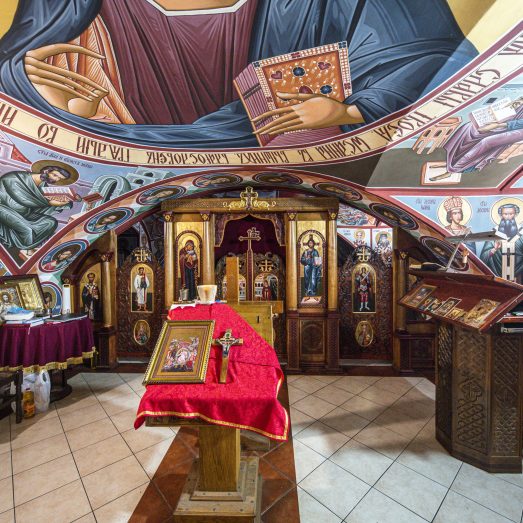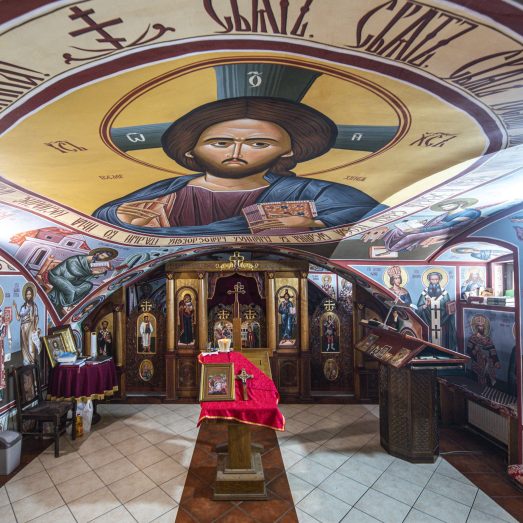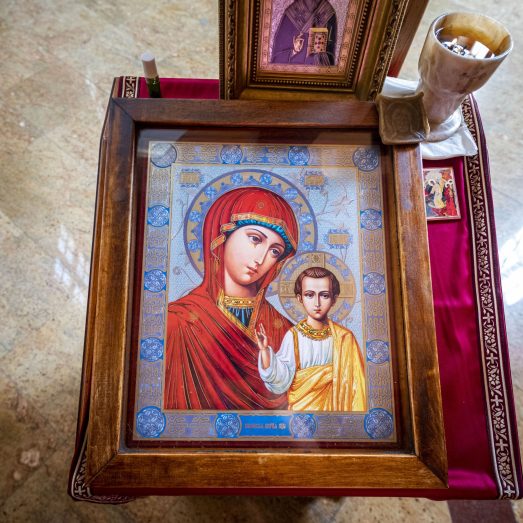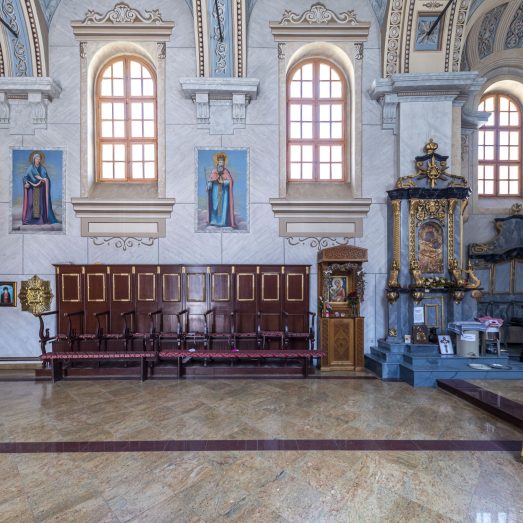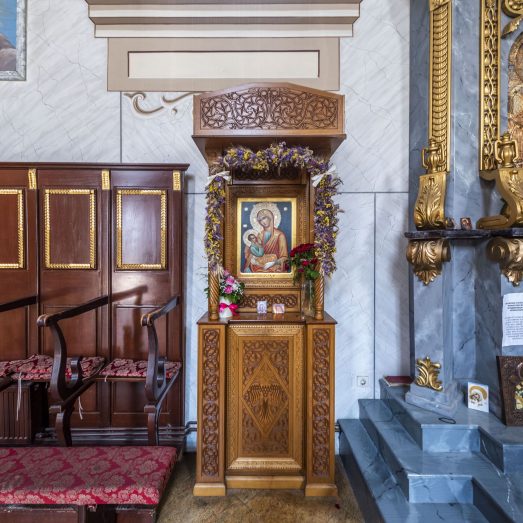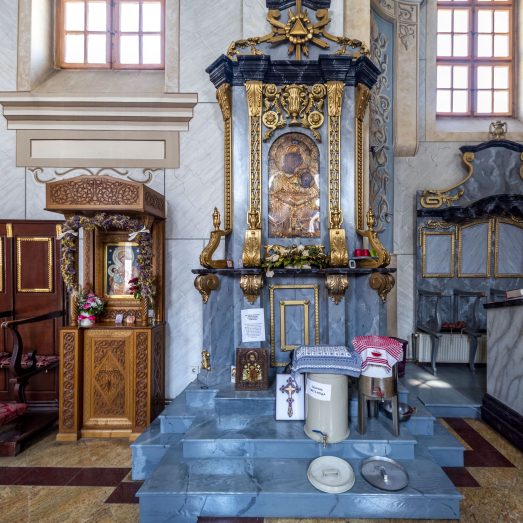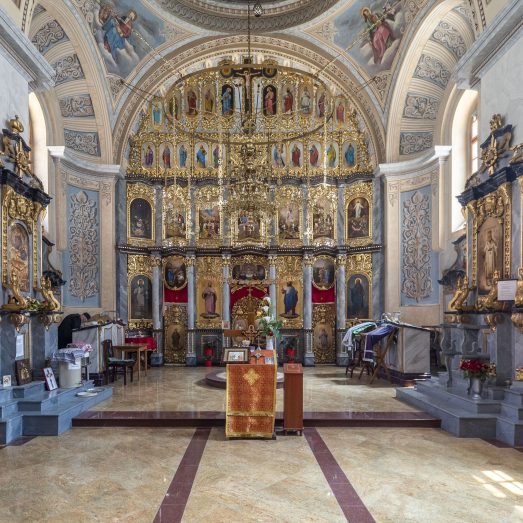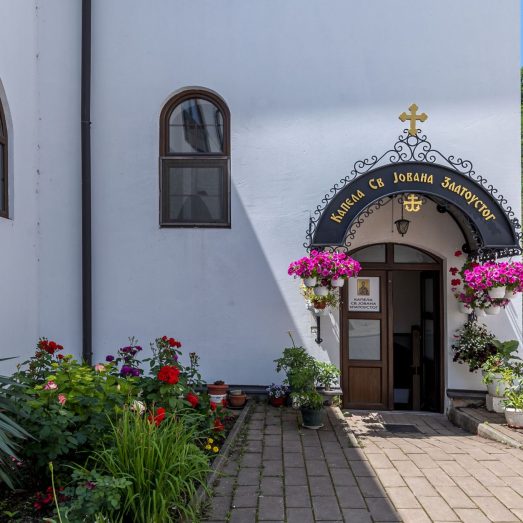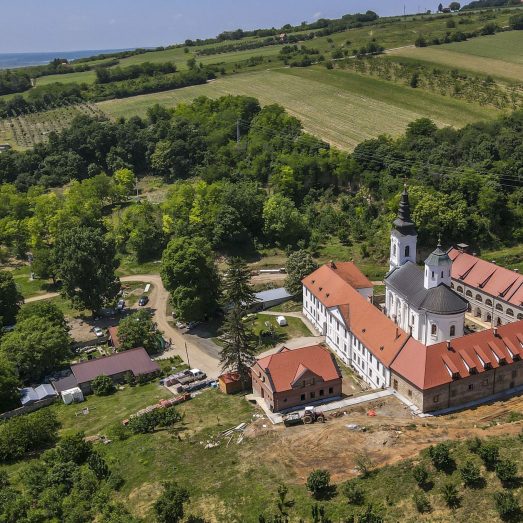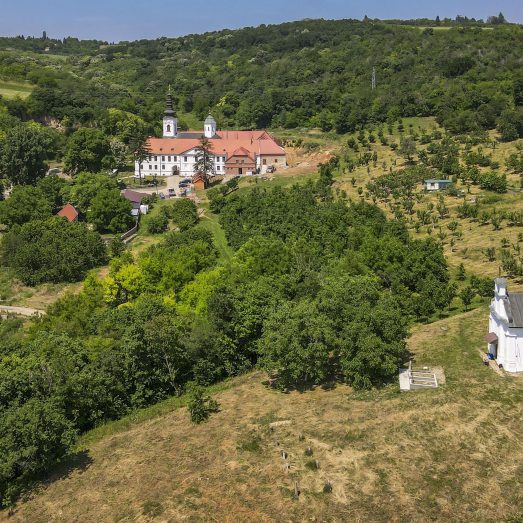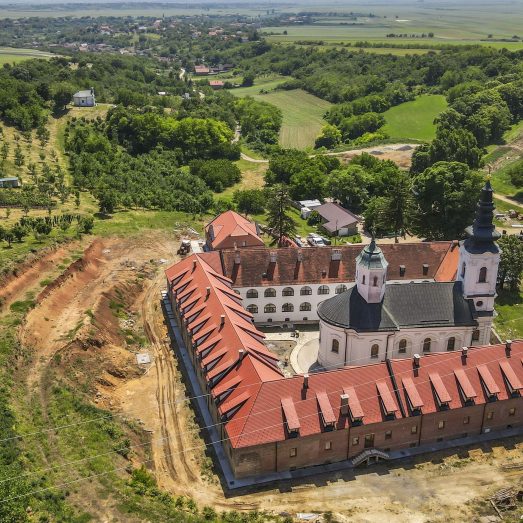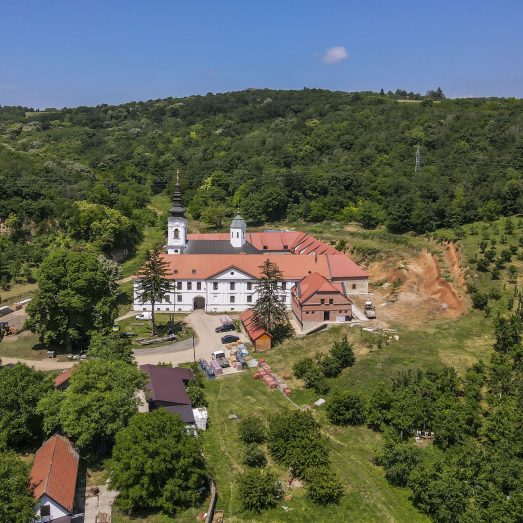The monastery church is dedicated to St. Sava (Sveti Sava) (January 27)
According to lore, the Kuveždin Monastery was built by Despot Stefan Štiljanović at the beginning of the 16th century. In written sources, it is mentioned in the manuscript menologium of the Monastery of the Holy Trinity in the Ovčar-Kablar Gorge and in an Ottoman document, both from the middle of the 16th century. In addition to the original monastery church of modest dimensions, the konaks were successively built and renovated in the 18th century, and the work was completed at the beginning of the 19th century by the construction of the southern part of the konak with the entrance to the monastery. At the beginning of the 19th century, the old monastery church was replaced by a monumental temple, built next to a preserved, massive bell tower. Between the two world wars, the monastery was female, and the monastery life was maintained by nuns who left the Soviet Union after the October Revolution. History records the great sufferings of monks, nuns and monastery property during both World Wars, especially during the Second World War, when the church and konaks were blown up.
The monumentality of the monastery buildings is being renovated again, and part of the architectural heritage from past times is represented by the preserved Baroque chapel at the monastery cemetery from the second half of the 18th century. The reconstruction of the monastery complex, started at the end of the 20th century, continues to this day. In the part of the renovated konak, the Chapel of St. John Chrysostom (Sv. Jovan Zlatousti) was built. In front of the monastery there is a fountain with the year 1537 inscribed on it.
It is known that in the 18th century the iconostasis of the church was painted by Janko Halkozović, but it was sold to the church in Opatovac. In the middle of the 19th century, for the needs of the church built at the beginning of the same century, the new Baroque-Classicist iconostasis was painted by academic painter Pavle Simić and carved by Georgije Devič. To date, twenty icons of Pavle Simić have been preserved, which are located in the lower part of the iconostasis. The icons of this Novi Sad painter, educated at the Academy of Fine Arts in Vienna, are characterized by a Biedermeier-Nazarene style, both in the choice of religious themes and in the manner of idyllic sentiment. The same artist painted the vaults of the church. On the walls of the church there are depictions of the Branković family of Srem members and St. Sava (Sv. Sava). Wall paintings and icons on the iconostasis of the Chapel of St. John Chrysostom (St. Jovan Zlatousti) was done by the novice Nenad Tošić.
In addition to the temple patron saint day St. Sava Day (Savindan) (January 27), the Monastery of Kuveždin celebrates the Transfiguration of Jesus (Preobraženje Gospodnje) (August 19) and the day dedicated to the icon of the Nursing Madonna (Bogorodica Mlekopitateljica), whose copy is in the temple (January 25). The memory of despot Stefan Štiljanović (October 17) is also kept here. In the church of the Monastery of Kuveždin there is a miraculous icon of the Virgin Mary (Bogorodica), a copy of the icon of the Mother of God in Pochaev, and icons in which the particles of the relics of the Saints of Pochaev are. The monastery treasury contained a chalice from 1559, which was donated to Mileševa by the Russian Tsar Ivan the Terrible. Today it is in the Museum of the Serbian Orthodox Church in Belgrade.
TOURIST INFORMATION: The appropriate way of dressing is implied (for women covered head, long skirt, long sleeves, and for men long trousers and shirt). Group visits to the Kuveždin Monastery should be announced a day or two in advance via phone number: +381 (0)22 661-300
